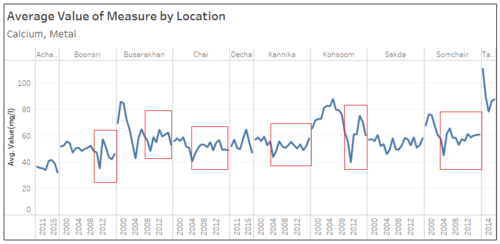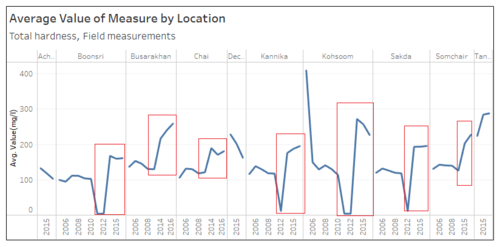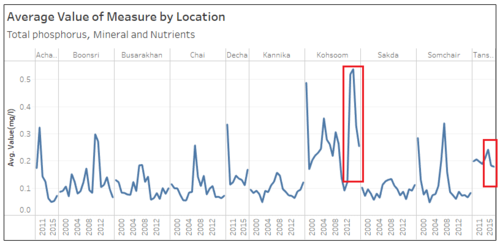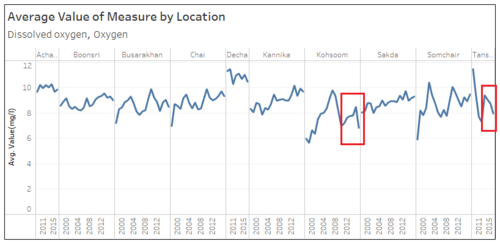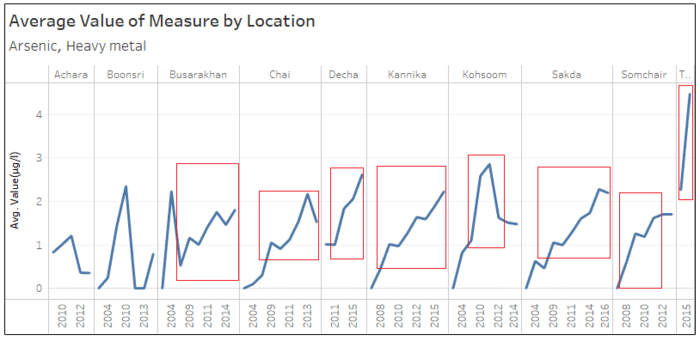Difference between revisions of "ISSS608 2017-18 T3 Assign Vaishnavi Praveen Agarwal Vast"
| Line 81: | Line 81: | ||
</div> | </div> | ||
| + | <br><br><br><br><br><br><br> | ||
===4. Increase in Artificial Chemical Concentrations=== | ===4. Increase in Artificial Chemical Concentrations=== | ||
Revision as of 14:50, 8 July 2018
|
|
|
|
|
|
|
Question-1: Characterize the past and most recent situation with respect to chemical contamination in the Boonsong Lekagul waterways.
1. Direct Relation between Calcium and Total Hardness
Water Hardness is the amount of dissolved Calcium and other metals ions in water. A good level of hardness in water is <120 mg/l. Based on the data, it is seen that the concentration of Calcium increases after 2012 in all the places. Also, the levels of Total Hardness increased in all the places after 2012. Therefore, similar trend for these two measures is seen. Also, both of these measures are high in Tansene and Kohsoom.
2. Inverse Relation between Total Phosporous and Dissolved Oxygen
Just as we need air to breathe, aquatic organisms need dissolved oxygen to respire. It is necessary for the survival of fish, invertebrates, bacteria, and underwater plants. Low dissolved oxygen (DO) primarily results from excessive algae growth caused by Phosphorus. Phosphorus is an essential element for plant life, but when there is too much of it in water, it can speed up eutrophication. The maximum level of Phosporous is 0.03 mg/l. From the graphs below, it is seen that the Total Phosphorous levels are high for Kohsoom and Tansene for the last two years as compared to other places. And, the levels of Dissolved Oxygen have decreased in these two places for the last two year, and its the least compared to other places.
3. Increase in Arsenic Concentration
The concentration level of Arsenic increased in all the places after 2009. Arsenic can enter the water supply majorly from industrial pollution. Which gives a reason to claim that the industrial waste has increased over the years.

